5 Awesome Mattress Alternatives
by | Last UpdatedSo, you want to arrange a comfy sleeping spot, but the thought of purchasing another bulky bed with a mattress scares you?
Or, maybe you’re tired of your old mattress and wish to try something new?
I can relate. Which is why I came up with the five best mattress alternatives that can come in handy for anyone who can’t or doesn’t want to use a regular bed.
So, get cozy and continue reading!
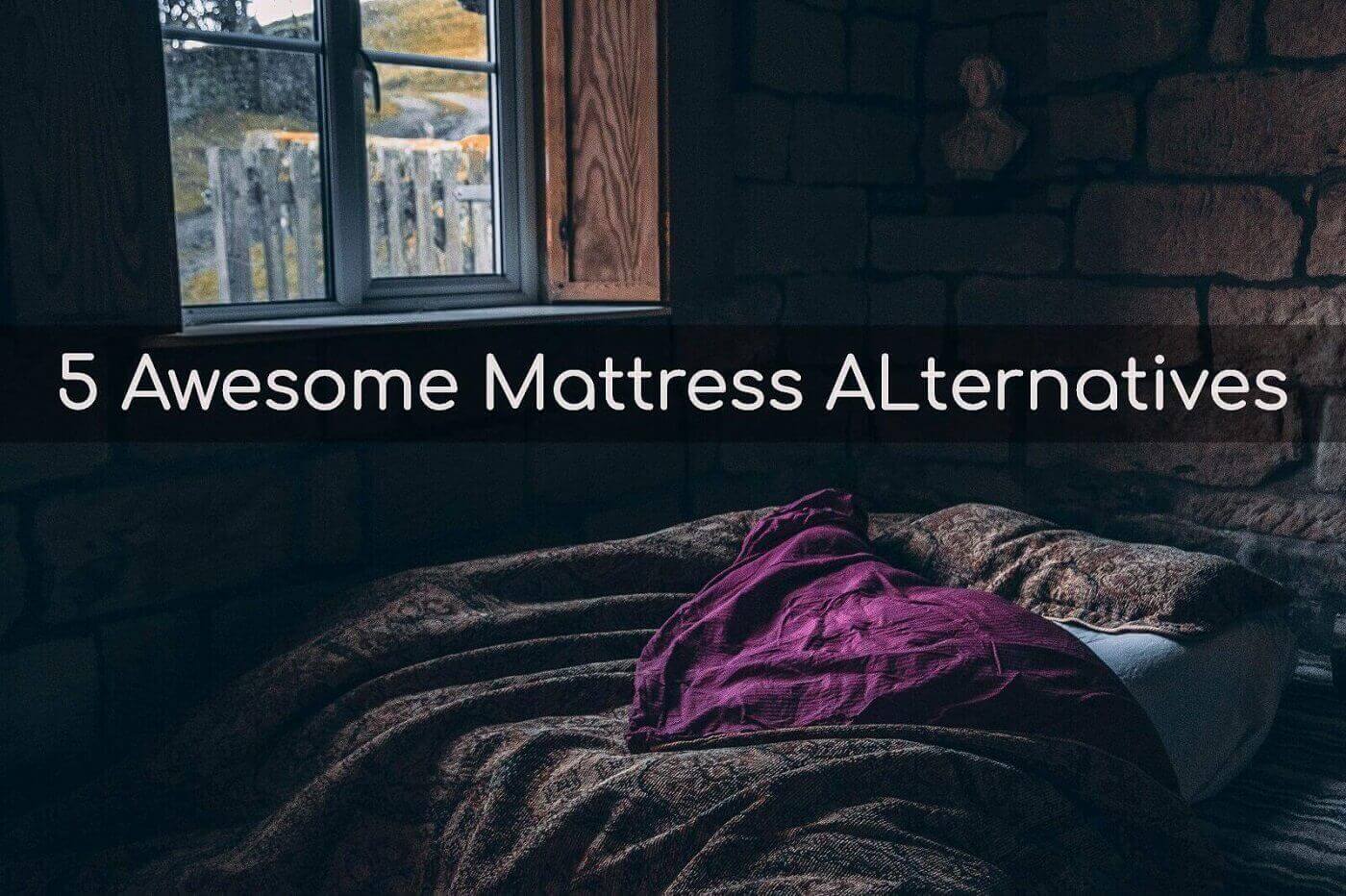
Disclaimer
Before you dive into the diversity of options, I need to explain why I chose the ones reviewed below, and not the others.
When it comes to reviewing such sleep products, I actually like accessing the experience of real people.
So, I’ve made a poll on my Facebook page about what bed alternatives people use regularly. 528 users responded to this poll in 2 days, and here are the results:
- 194 (36.75%) sleep on an air mattress;
- 108 (20.46%) use a reclining sofa or chair as a sleeping spot;
- 90 (17.04%) sleep on the hard floor;
- 74 (14.01%) prefer a futon mattress;
- 62 (11.74%) prefer a hammock when the possibility appears.
Thus, I gathered all the pros and cons of each method, and here’s how this article eventually appeared.
And now, let me share what I’ve found.
#1 Air Mattress
The most frequently used alternative to a standard mattress is an airbed, and this is totally understandable. Modern inflatable beds are no worse than traditional mattresses, or sometimes even excel them in terms of comfort and maintenance. See for yourself:
- Air mattresses are very cradling. When you’re sleeping on an airbed, it literally feels like a cloud. The air conforms closely to your body curves, which results in excellent pressure and pain relief. Also, more luxurious beds often have a sewn-in memory foam topper for an even better sleeping experience.
- Air mattresses are cheap. In fact, it’s the cheapest mattress alternative you can find on the market. The most expensive option with a built-in pump will hardly cost you more than 300 bucks.
- Airbeds sleep cool. Even those with foam toppers. The air inside them quickly dissipates your body heat and won’t cause you to sweat during the night.
- Air mattresses make a great outdoor sleeping spot. If you’re a frequent traveler and love outdoor activities, you can put your comfort to a whole new level by investing in a portable mattress that requires a couple of minutes to be arranged into a full-fledged bed.
- Inflatable beds are easy to maintain. Finally, air mattresses almost always come with a storage bag, so you can roll them tightly and store even in your wardrobe; they won’t take too much space.
As you can see, the air mattress is almost a universal solution for any occasion. So, if you believe that you can accept an air bed as an alternative to mattress in your house, check out my selection of best inflatable beds.
But first, you should know that inflatable mattresses aren’t entirely perfect:
- Airbeds are prone to puncturing. Uneven surface, pets, or accidents can end the comfort of your airbed very soon.
- Pumps may be too loud. Some built-in pumps are designed to prevent deflation during the use by adding some air when it’s needed. Which may happen in the middle of the night and wake you up if you’re a sensitive sleeper.
Actually, all air mattresses tend to lose some air at night due to temperature fluctuations, which is why it’s recommended to choose mattresses of higher thickness.
#2 Reclining Chair
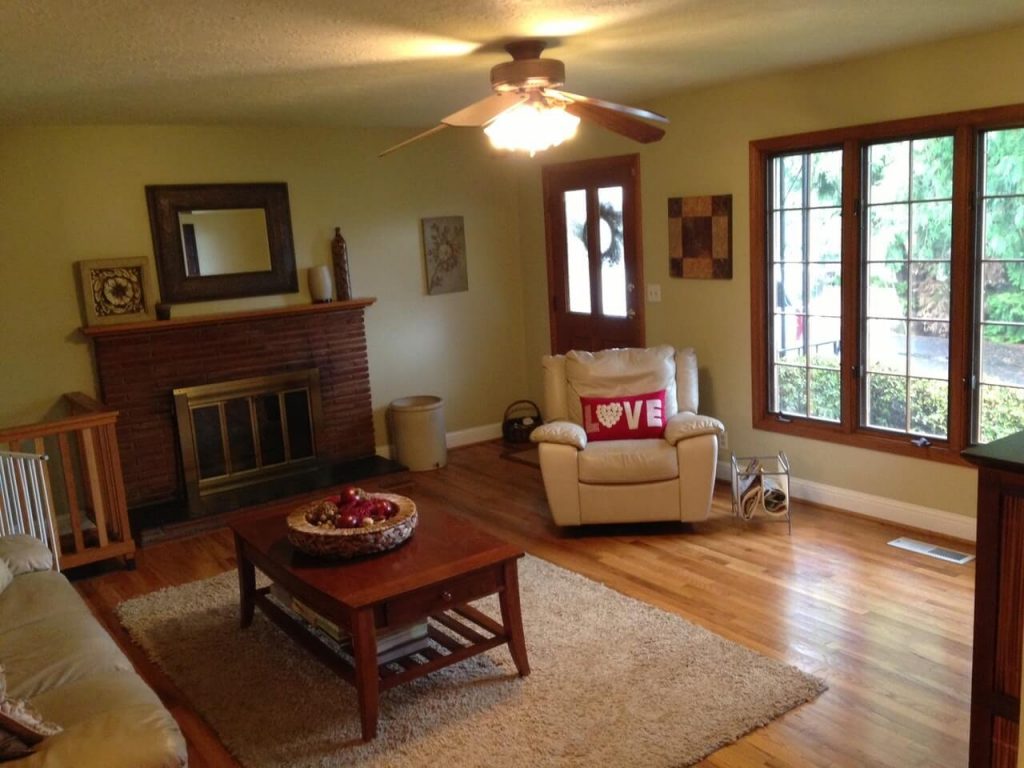
Another bed idea the respondents of my poll utilize most frequently is a recliner chair. As the name implies, it’s a chair that can recline when you push the button on a remote controller or pull the lever on the chair itself.
Although many people do not consider recliners as a temporary sleeping spot, this item can actually turn into a comfy mattress alternative. It’s also a great guest bed idea, for example, if you live in a small apartment and cannot afford a transformer sofa or a traditional bed.
Here’s why recliners are cool to sleep on:
- They eliminate back pain. By reclining your upper body, you put away the load from your lower back so that it won’t become strained and will recover faster in case you have some injuries.
- They reduce sleep apnea symptoms. Researchers from the National Heart, Lung, and Blood Institute found that sleep apnea increases the risk of heart failure by 140%, so it’s definitely a thing you should be concerned about. By sleeping on a reclined surface, you allow your upper airways to remain open, so they won’t obstruct during sleep and won’t provoke apnea episodes.
- They support circulation. Along with protecting you from sleep apnea, recliners can aid in healthy blood circulation from your legs to your heart. This, in turn, may reduce swelling and pain and prevent you from getting varicose veins.
- They ease gastric issues. People with heartburn can also benefit from sleeping in a recliner. The elevated upper body puts the stomach below the esophagus so that the gastric juices won’t get in it during your sleep.
The drawbacks of sleeping in a reclined chair come from the fact that we’re all different, and what works for one person may not work for others. Some people might feel sore or snore louder while sleeping in a recliner, but this doesn’t mean that a recliner can make an excellent sleeping spot.
I’ve reviewed some of the most comfortable recliners on the market, and listed the main points to consider when making a purchase, in this article. Make sure you read it if you’re going to opt for this mattress alternative.
#3 Futon Mattress
The third most common option in my poll was a futon mattress. Most people noted that they used futon mattresses for occasional guests, but some others also mentioned they used their futon as a regular sleeping spot in a dorm.
Today, there are two types of futon mattresses:
- Futon sofa beds. This variation looks like a standard sofa but can be easily turned into a sleeping area.
- Original Japanese floor mattress, or shikibuton. This one resembles a thick blanket that can be put directly on the floor to create a comfortable sleeping spot in small spaces.
Most people find futon mattresses great because they are:
- Cradling. Although futon mattresses seem thin, their height is more than enough to cradle an average sleeper no matter which sleeping style he or she may prefer.
- Lightweight. Futon mattresses are very easy to move and typically have a small size and weight.
- Affordable. Futon mattresses generally are cheaper compared to standard beds, so you can easily buy a couple of futons if you feel you need a thicker sleeping pad.
There aren’t any noticeable drawbacks to sleeping on a futon, except that you need to get used to its feel, which may take a couple of nights. But after that, a futon mattress can provide you with a comfortable sleep on a daily basis.
If you feel this option may work for you, check out my reviews of the best futon mattresses available on the market today. You will surely find the one that will satisfy your needs.
#4 Hammock
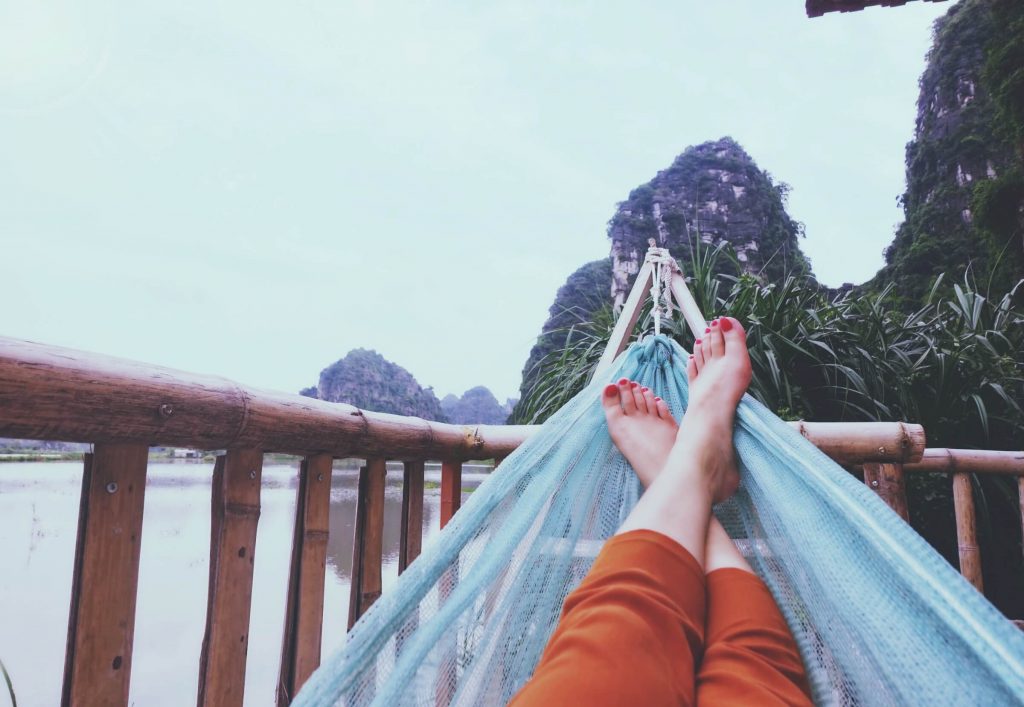
A hammock is an unexpectedly common mattress alternative. Some of the people who took part in my survey admitted that their hammock is installed in their room, not outside.
The main advantage of sleeping in a hammock is that it envelops you, creating the feeling of coziness, and keeps your upper body inclined, helping the muscles relax.
But this isn’t the only benefit you would get:
- A hammock sleeps cool. In terms of breathability, it’s an excellent air mattress alternative that doesn’t require inflating and can be put almost anywhere without risks of punctures.
- A hammock rocks you to sleep. Swaying movements are soothing to your nervous system. It literally makes you feel like a baby in a cot. Very relaxing! People with insomnia should definitely try this option.
- A hammock can relieve back pain. Many people won’t agree with me on this, but I believe that our sore muscles and strains are the result of our tossing and turning during the night. When you lie in a hammock, though, you initially are in a comfortable position, so there’s no need to search it for hours.
However, some hammock issues still exist:
- A hammock requires a lot of space. Really. If you put it in between trees in your backyard, it doesn’t seem so, but when you try to arrange a hammock inside a house, you may find out… that you need a bigger house.
- Hammocks may not work for individuals with chronic pains. In some cases, that fixed spine position your hammock puts you in can only make things worse. So, please consult with your doctor before choosing this mattress alternative.
If you’re afraid of falling out of the hammock, just loosen it up. Thus, it will cradle and hold you tightly, and you won’t have to worry about accidental falling.
#5 Sleeping on the Floor
And finally, there were people in my survey who just ditched all the sofas and mattresses and chose to sleep on the floor. If you want to follow their way, you can use a sleeping bag (such as those used by hikers) or put a sleeping mat and a pillow on the floor to resemble some kind of bed.
While this mattress alternative may seem weird to some of you, it actually has some benefits too:
- A minimal amount of things to arrange a sleeping spot. Basically, if you have the floor and some bedding items, you’re all set.
- You can be sure that you won’t fall. Well, now you might think that I’m joking, but for overly active sleepers rolling out of bed or hurting themselves by hitting bed table corners is a real concern.
- You will sleep cool. Sleeping on the floor can prevent overheating because colder air is heavier and hence tends to gather closer to the floor.
- Back pain issue solved. A hard floor is a uniform sleeping surface, which can be extremely beneficial for people with some back issues. In fact, this may even improve posture.
Now, the main problem with sleeping on the floor is, again, temperature. If you ever walked on the floor with your bare feet, you may have noticed how cold it can get. Sleeping on a cold surface may lead to hypothermia and illnesses. So, this mattress alternative is best for hot climates. However, if you make sure you — or your guests — have warm bedding and pajamas, you can actually sleep on the floor wherever in the world you are.
And don’t forget about a supportive pillow for your neck.
So, what do you think about these alternatives? Have you tried any of them? Please feel free to share your experience in the comments below.

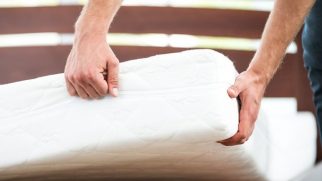


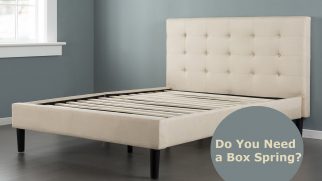
No Comments